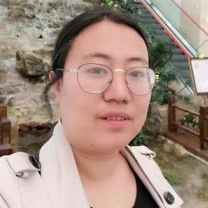Symmetry and Solutions of Fractional Differential Equations with Their Developments
A special issue of Fractal and Fractional (ISSN 2504-3110). This special issue belongs to the section "General Mathematics, Analysis".
Deadline for manuscript submissions: 15 October 2024 | Viewed by 9515
Special Issue Editors
Interests: methods and application of nonlinear equations; fractional calculus and their applications; boundary value problems; ordinary & partial differential equations; fractional differential equations; fractional Laplacian problem; analytical and numerical methods for nonlinear problems; methods of functional analysis; iteration methods for differential equations; Hessian equation; Monge–Ampere equation; modern analytical methods and their applications
Interests: nonlinear analysis; differential and difference equations; fixed point theory; general inequalities
Special Issues, Collections and Topics in MDPI journals
Interests: boundary value problems; ordinary & partial differential equations; fractional differential equations; analytical and numerical methods for nonlinear problems; methods of functional analysis; stability theory; applications in energy problems; ecology; fluid mechanics; acoustic scattering; disease models
Special Issues, Collections and Topics in MDPI journals
Interests: fractional calculus and applications; differential equations & nonlinear analysis; integral equation and inequalities; fractional Laplacian problem; Hessian equation; Monge–Ampere equation; modern analytical methods and their applications
Special Issues, Collections and Topics in MDPI journals
Special Issue Information
Dear Colleagues,
Fractional differential equations arise in many engineering and scientific disciplines such as physics, chemistry, biology, economics, control theory, signal and image processing, biophysics, blood flow phenomena, aerodynamics, fitting of experimental data, etc. In addition, it is very important to study the properties of the solutions of fractional differential equations, such as existence, uniqueness, symmetry, and monotonicity of the solutions. On the other hand, nonlinear functional analysis is an important branch of modern analytical mathematics, and it is one of the most active research areas in analytical mathematics. This Special Issue focuses on applying the tools of nonlinear functional analysis to study fractional differential equations and systems, in particular, fractional differential and integral operators, fractional Laplacian operators and their variants, fractional Hammerstein equations, fractional stochastic differential equations, etc. We welcome excellent manuscripts on a wide variety of nonlinear problems based on nonlinear analytical methods, including but not limited to cone theory, topological degree methods, upper and lower solution methods, critical point theory, monotonic iterative methods, and fixed-point methods, etc.
Prof. Lihong Zhang
Prof. Dr. Ravi P. Agarwal
Prof. Dr. Bashir Ahmad
Prof. Dr. Guotao Wang
Guest Editors
Manuscript Submission Information
Manuscripts should be submitted online at www.mdpi.com by registering and logging in to this website. Once you are registered, click here to go to the submission form. Manuscripts can be submitted until the deadline. All submissions that pass pre-check are peer-reviewed. Accepted papers will be published continuously in the journal (as soon as accepted) and will be listed together on the special issue website. Research articles, review articles as well as short communications are invited. For planned papers, a title and short abstract (about 100 words) can be sent to the Editorial Office for announcement on this website.
Submitted manuscripts should not have been published previously, nor be under consideration for publication elsewhere (except conference proceedings papers). All manuscripts are thoroughly refereed through a single-blind peer-review process. A guide for authors and other relevant information for submission of manuscripts is available on the Instructions for Authors page. Fractal and Fractional is an international peer-reviewed open access monthly journal published by MDPI.
Please visit the Instructions for Authors page before submitting a manuscript. The Article Processing Charge (APC) for publication in this open access journal is 2700 CHF (Swiss Francs). Submitted papers should be well formatted and use good English. Authors may use MDPI's English editing service prior to publication or during author revisions.
Keywords
- nonlinear fractional ordinary (partial) differential equations and applications
- nonlinear problem involving fractional Laplacian operators and their variants
- nonlinear Hammerstein equations involving fractional operators
- nonlocal Monge–Ampere equation and its extensions
- nonlocal operators, symmetries, and applications
- geometrical methods for problems of mathematical physics
- geometrical analysis and differential equations
- monotonicity of solutions to various differential equations
- existence and uniqueness of solutions to differential equations
- symmetry of solutions to differential equations








